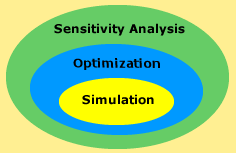

Underfeeding relative to workload (negative energy balance) renders the race team less competitive because of “depowering”. It is well to remember that the excess energy of mixes which are too high in protein (legumes) relative to the work load will be stored as fat. Excess energy is stored as fat with subsequent loss of buoyancy and fitness. Overfeeding relative to workload (positive energy balance) renders the race team less competitive because of excess baggage (“leady”).

During young bird training special attention must be made to prevent depletion of the energy reserves in the liver and muscle. The “energy balance” must be assessed short term (daily) and long term (weekly) with fit flocks during the race season, because the fitness level will drop both when too much and too little energy is supplied. The competition pigeon will not perform to its fitness level when the “energy balance” is incorrect. It is the constantly changing energy requirements of the competition pigeon that makes feeding such a challenge to even the best fanciers.

Of course, the fuel requirements of the training pigeon vary enormously from day to day. The goal of feeding is to provide the training and racing pigeon with exactly enough (not too much and not too little) fuel (energy in the food) for sustained flight (loft exercise or racing). The feed system provides the race team with the correct energy levels for training and racing. After this balance is achieved, the energy content of the mix becomes the most important part of successful feeding. The mix chosen must provide a good balance of protein (amino acids) and for this to be achieved at least 8 different grains must be used. coli, coccidiosis, worms and wet canker all decrease the amount of nutrients entering the body.īy using the best quality grains and with a healthy race team, the fancier can now think about a racing mix appropriate for his particular family of birds and training methods. A healthy bowel is required before we can test our feeding systems, because an unhealthy bowel fails to deliver the fuel of good grain to the pigeon’s body. We can only begin the art of good feeding when both the quality of the food is guaranteed and the flock is healthy. Only practice and observation can teach you the art of feeding, but hopefully the methods of feeding described here can help you find the pathway to feeding success. The following paragraphs will introduce you to the science (or theory) of feeding, but for racing success you must also become expert at the practice (or art) of feeding. To do this consistently we must have a good understanding of the food itself. Our common aim is to provide the racing pigeon with the best fuel for race day. During the racing season, the main function of food is to provide the fuel for flying.


 0 kommentar(er)
0 kommentar(er)
